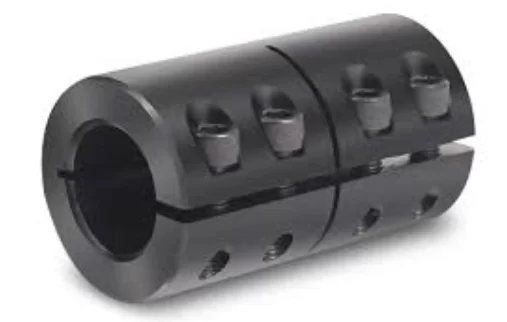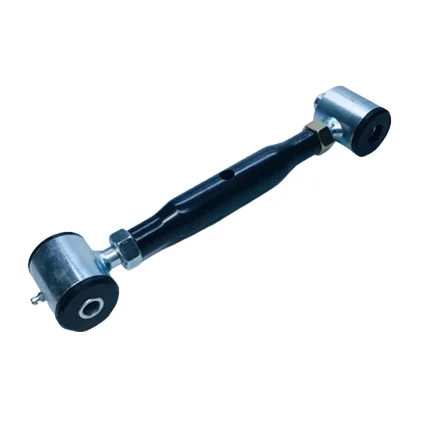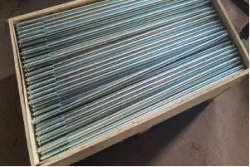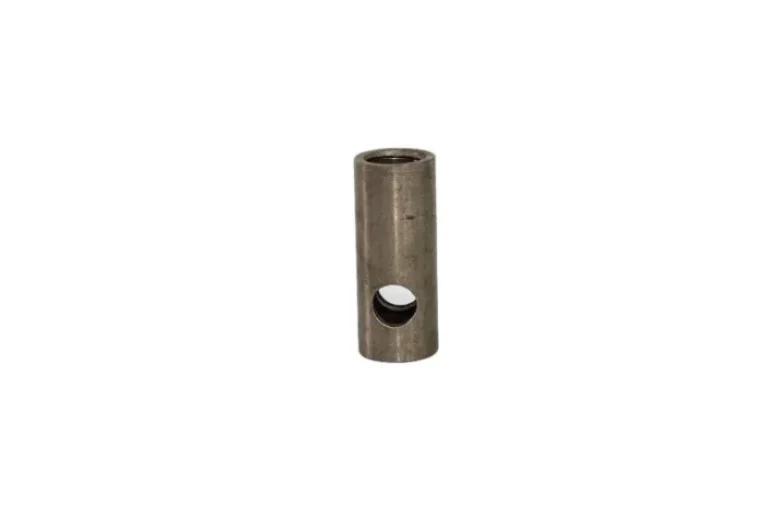Understanding Rigid Couplings
Definition and Functionality
Rigid coupling is an essential mechanical element used to connect two shafts, ensuring both alignment and the transmission of rotational movement. It lacks flexible components, providing a solid and stable means of joining parts within a structure. The main role of rigid coupling in architecture is to uphold precise alignment between connected elements, which is vital for maintaining structural integrity. This mechanism enables architects and engineers to design buildings and structures capable of withstanding various stresses while preserving their form and function.
Types of Rigid Couplings Used in Architecture
There are several types of rigid couplings employed in architectural designs. Sleeve couplings are commonly used to connect lightweight components due to their simple design and ease of installation. Flanged couplings, on the other hand, are preferred in scenarios where higher loads need to be managed, providing robust support in critical areas. Clamped or compression couplings are also frequently seen in architecture, as they offer the advantage of easy assembly and disassembly, facilitating maintenance and adjustments without dismantling the entire structure. These types of couplings are integral to achieving the desired structural stability.
Common Materials for Rigid Couplings
Rigid couplings in architectural applications are typically made from materials that offer a balance between strength, durability, and cost-effectiveness. Steel is widely used due to its high tensile strength and ability to withstand substantial loads without deformation. Cast iron is another prevalent material, known for its excellent compressive strength and wear resistance. For projects requiring lighter materials, aluminum couplings are chosen for their corrosion resistance and ease of handling. The material selection depends on the specific requirements of the project and the environmental conditions the structure will face.
Benefits of Rigid Couplings in Structural Stability
Improved Load Distribution
Rigid coupling plays a crucial role in evenly distributing loads across different segments of a structure. By firmly connecting various architectural elements, it ensures that any stress or load applied to one part is effectively spread out, reducing the risk of localized failure. This efficient load distribution enhances the overall structural integrity, allowing buildings to sustain higher loads without compromising their stability. Such systematic load management is vital for both the safety and longevity of architectural projects.
Minimization of Structural Movement
One of the notable benefits of employing rigid coupling in architectural structures is its capacity to limit structural movement. Due to their firm construction, these couplings avert any unwanted shifting or misalignment between interconnected elements. This becomes particularly vital in regions influenced by external factors like wind or seismic activities. By sustaining a steady connection, rigid couplings play a role in mitigating the likelihood of joint failure or structural deformation, which is essential for guaranteeing the safety and efficiency of architectural designs.
Enhanced Durability and Longevity
The use of rigid coupling significantly enhances the durability and lifespan of architectural structures. By providing secure and stable connections, these couplings contribute to the robustness of the entire system, reducing the need for frequent repairs and replacements. The materials used in rigid couplings, such as steel and cast iron, are designed to withstand harsh environmental conditions and wear and tear over time. This long-term reliability ensures that structures maintain their integrity and functionality for extended periods, ultimately leading to cost savings and increased safety.
Applications of Rigid Couplings in Different Architectural Elements
Bridges and Overpasses
Rigid coupling is extensively used in the construction of bridges and overpasses due to its ability to provide stable connections that can handle substantial loads and stresses. These structures require robust components to support the weight of traffic and withstand environmental forces such as wind and earthquakes. By using rigid couplings, engineers can ensure that the various segments of a bridge or overpass function as a cohesive unit, maintaining alignment and stability. This is critical for the safety and durability of these vital transportation links.
High-Rise Buildings
In high-rise buildings, rigid coupling is essential for maintaining the structural integrity of the framework. These buildings face significant vertical loads and require strong connections to transfer these loads evenly across all floors and columns. Rigid couplings allow for the precise alignment of beams and columns, preventing any differential movement that could lead to structural issues. By ensuring that all elements of the building are securely connected, rigid couplings contribute to the resilience of high-rise structures, making them capable of withstanding both everyday stresses and extraordinary events like earthquakes.
Industrial Structures
Industrial structures, which frequently house heavy machinery and equipment, greatly benefit from the use of rigid couplings. These structures must support significant dynamic loads without compromising stability. Rigid couplings offer the essential mechanical connection to maintain different components aligned and functioning together smoothly. In environments where precision and durability are critical, such as factories and power plants, the use of rigid couplings ensures that the structural framework can handle operational demands while maintaining safety and efficiency. This reliability is vital for the continuous operation of these facilities.
What Is the Common Rigid Coupling in Architecture?
Overview of Flange Couplings and their Popularity
Among the various types of rigid coupling used in architectural applications, flange couplings are particularly noteworthy. Flange couplings consist of two flanges that are bolted together with high-strength fasteners, providing a robust and secure connection. These flanges are typically machined to ensure precise fit and alignment between connected components. The popularity of flange couplings in architecture stems from their ability to manage substantial loads and provide stable connections in critical areas, such as structural beams and columns.
Flange couplings are widely favored for their reliability and performance in maintaining structural integrity. Their design allows for easy inspection and maintenance, which is crucial in large-scale constructions. Whether in the construction of bridges, high-rise buildings, or industrial structures, flange couplings are integral to ensuring that different segments of a structure work cohesively, thereby enhancing overall stability and durability.
Key Features and Advantages
Robust Connection Points
One of the standout features of flange rigid coupling is the robust connection points they offer. The flanges are engineered to withstand high stress and torque, making them ideal for scenarios where substantial forces are at play. This robustness ensures that the connected elements remain securely fastened, even under dynamic loads such as wind or seismic activity. The ability to create such strong connection points is essential for the long-term stability and safety of architectural structures.
Ease of Installation and Maintenance
Flange rigid coupling is also recognized for its ease of installation and maintenance. The design of flange couplings allows for straightforward assembly, necessitating minimal specialized tools or expertise. This simplicity not only enables quick installation but also facilitates routine maintenance checks and repairs. When needed, disassembling and reassembling flange couplings can be accomplished without causing significant disruption to the overall structure. This feature is particularly valued in large-scale projects where minimizing downtime is essential.
Introduction to Baoqi and Their Contributions to Architectural Stability
Company Background on Baoqi
Baoqi is a leading company renowned for its innovative solutions in the field of rigid coupling. Established with a focus on engineering excellence, Baoqi has quickly become a trusted name among architects and engineers worldwide. The company leverages advanced manufacturing techniques and rigorous quality control processes to produce high-performance couplings suited for a wide range of architectural applications. Baoqi’s commitment to reliability and customer satisfaction has positioned them as a key player in the industry, continually pushing the boundaries of what rigid couplings can achieve.
Innovative Solutions Provided by Baoqi in the Field of Rigid Couplings
Baoqi has been at the forefront of developing innovative rigid coupling solutions tailored to meet the evolving demands of modern architecture. One of their significant contributions is the introduction of couplings with enhanced material properties designed to withstand extreme environmental conditions. These advancements ensure that the structures utilizing Baoqi’s couplings maintain their integrity and performance even in the harshest settings.
Furthermore, Baoqi has developed custom flange couplings that offer superior alignment and load distribution capabilities. These custom solutions address the specific challenges faced in complex architectural projects, providing engineers with the tools they need to achieve optimal structural stability. Baoqi’s continuous innovation and commitment to quality have made them a preferred partner for projects requiring reliable and efficient coupling solutions.
In summary, the significance of rigid coupling in architecture is immense. These components play a crucial role in enhancing load distribution and minimizing structural movement, thereby contributing to the safety and longevity of various structures. Among the various types of rigid couplings, flange couplings are particularly notable for their durability and user-friendliness, making them a popular choice in the industry. Companies like Baoqi are pushing the boundaries in this field by offering customized solutions tailored to the specific requirements of contemporary architectural designs. By utilizing high-quality rigid couplings, architects and engineers can create structures that are built to last, ensuring safety, efficiency, and durability for future generations.









